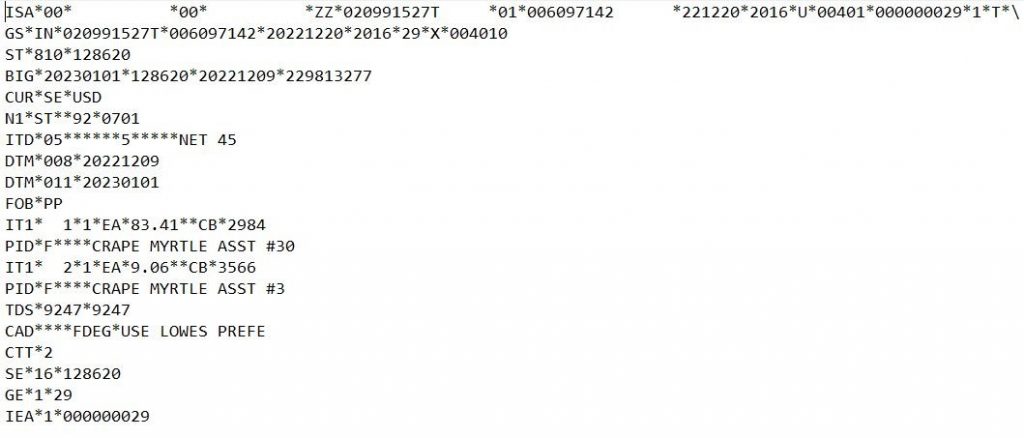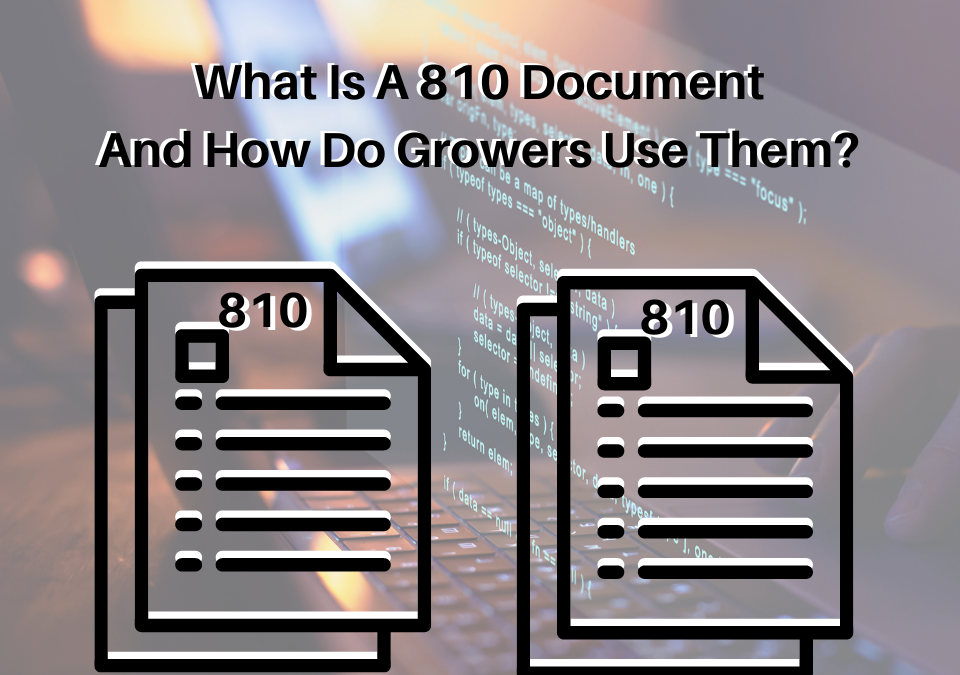
What To Expect With AGS Consultative Sales Process
January 10, 2023
4 Steps To Improve Delivery Coordination With Your Customers
January 25, 2023EDI 810 Document Invoice Definition
The EDI 810 Invoice is the electronic version of the paper-based invoice document used to bill the list of goods provided from one business to another.
An 810 EDI document is beneficial to growers because it allows for faster and more accurate data exchange between companies, reducing the time and cost associated with manual data entry. Additionally, it eliminates the need for paper invoices, which can be lost or damaged in transit. The EDI 810 It is typically sent in response to an EDI 850 Purchase Order once goods are delivered to the end customer.

Copyright Advanced Grower Solutions
The 810 EDI invoice is an important document that contains a a variety of information about the customer and the products that you are billing for in this transaction. This document is used by many businesses to conduct their daily operations, so knowing how to use it correctly and what information it contains is essential.

Copyright Advance Grower Solutions
When retailers send EDI 850 purchase orders that you have fulfilled by shipping the products, you will usually need to send an EDI 810 invoice via an EDI provider for those shipped products to that customer in order to receive payment. In turn, the EDI provider will transform the data into a format to integrate with the customer’s back-end system or needs.
EDI 810 Document
The 810 EDI Invoice is a document that provides information to the buyer about the goods provided to the retailer by the supplier. This is especially important when there are multiple items being sold together, as it can be difficult for a buyer to know exactly what they’re receiving without this information.
Important Data Included in an 810 Invoice
The amount of data included in an 810 EDI invoice can vary based on the content of the fulfilled purchase orders and other variables such as shipping and logistics information. There are some common fields that are found on most 810 forms:
The 810 EDI Invoice contains information such as:
- Supplier and customer identification
- Purchase order number
- Product number or SKU
- Quantity
- Delivery location information
- Price
- Shipping terms
- Shipping Carrier
Important Considerations for EDI 810 Document
This EDI 810 document contains important information that may be used by the customer to fulfill their payment obligations to the supplier.
The EDI 810 contains several fields that usually are ‘turned around’ from the purchase order that is being invoiced. It is crucial that these elements are correct, and match the purchase order as well as any back end system data of the customer such as:
- Correct customer and supplier identification
- purchase order identifier
- product id (both supplier id and customer SKU in some cases)
- correct pricing
- correct order and delivery dates
- store or distribution center identification
- shipping method (and sometimes carrier)
- Others depending on trading parter
EDI 810 Document Rejection and Acceptance
The EDI standards identify another document called a EDI 997 that transmits information about the acceptance or rejection of a previously transmitted EDI document.
If any of the critical or required fields don’t match stored values in the trading partners system you risk the 810 being “rejected”. When an EDI 810 is rejected it means that the supplier is not going to get paid until the document is corrected and re-submitted.
In the case of an EDI 810 rejection, the supplier must correct the issue and resubmit the EDI 810 document or work directly with the trading partner to identify the cause of the rejection.
Once a correct EDI 810 document is submitted the corresponding EDI 997 document will contain the ‘accepted’ indication.
Summary
When communicating with larger retailers for EDI like Walmart, Lowes, Home Depot, Tractor Supply, or others an 810 document, in general, is used to send invoice information about past POs that have been fulfilled to the customer.
GrowerEDI provides a knowledgeable, experienced EDI data partner that can ease the EDI process, improve data flows, automate interactions, and provide data transformations to give you actionable, usable data.
If you need EDI or currently use EDI to transmit data to and from your trading partners GrowerEDI is a concierge EDI service that can help you improve your EDI experience and automation. Contact us today to learn more.
Author
-

Kara Roberson is the Digital Marketing Manager at Advanced Grower Solutions




